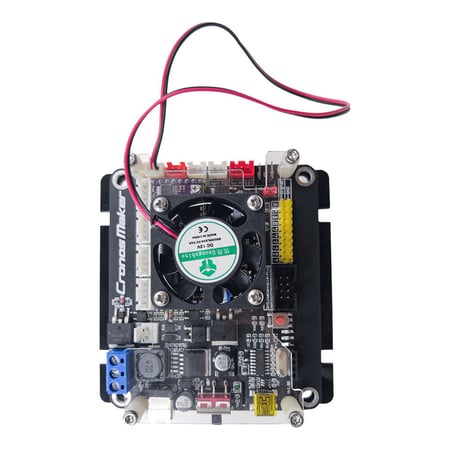

- #Raspberry pi grbl controller how to#
- #Raspberry pi grbl controller mac os#
- #Raspberry pi grbl controller serial#
- #Raspberry pi grbl controller drivers#
- #Raspberry pi grbl controller Bluetooth#

Could the issue be with the compiling/uploading of the GRBL.hex file through the IDE? If I try to upload it without the programmer it errors out. I can't seem to figure out where I went wrong, I feel like the communication between the boards is there because I was able to load other.
#Raspberry pi grbl controller how to#
I also tried checking GRBL in minicom, but I really am not sure if I know how to use minicom… There was nothing returned when I tried to check the version. The response returned is "No data from com port after connect.
#Raspberry pi grbl controller serial#
Now upon launching the GRBL Controller application on the pi, I attempt to connect to the serial port /dev/ttyAMA0 with a baud rate of 115200. The IDE returned no errors so I assumed everything had worked correctly. I then chose the GRBL sketch and compiled with the programmer over the raspberry pi GPIO. So at this point I opened up the Arduino IDE and loaded GRBL into the libraries as instructed in their wiki documentation. hex file using program 328, blink.hex and everything appeared to be working correctly, I was able to see the blinking LEDs. It runs on an Raspberry Pi or a laptop computer that you have Node.js installed. I also followed the tutorial here: to "free" the com port on the Rpi, and since inittab is no longer in the raspbian OS, I followed some other advice to disable the getty by doing: "sudo systemct1 disable this tutorial: to set the gertduino up to be programmed. A web-based CNC milling controller for the Arduino running Grbl. I have run updates on the raspberry pi, installed the latest Arduino IDE, installed the latest version of GRBL Controller and downloaded the newest master branch of the GRBL software.
#Raspberry pi grbl controller drivers#
Here is what I currently have: Raspberry Pi Model B running Raspbian Jessie, a gertduino board installed on the GPIO pins and a protoneer CNC shield with stepper motor drivers installed on the gertduino. So I have been following several different tutorials around the web to build a raspberry pi/arduino CNC controller (particularly the raspberry pi alamode CNC controller instructable, although I am not using an alamode board) and I have hit a bit of a wall. The best thing? The base model is only $20 $5!.ĭo you know a related subreddit? We'd love to know.įirst off I am going to apologize for cross posting this in so many places, but my issue involves a lot of specialized components.ĭisclaimer: I am fairly green with the raspberry pi and linux, and completely green when it comes to arduino boards. Welcome to /r/raspberry_pi, a subreddit for discussing the raspberry pi credit card sized, ARM powered computer, and the glorious things we can do with it. Pi project ideas: There's a huge list right here on this sub! Instead of passing command line options for -watch-directory, -access-token-lifetime, and -allow-remote-access, you can create a ~/.Friendly reminder: Please don't just post pictures of unused pis - do a project!Ĭomplete r/raspberry_pi Rules Check the FAQ and Helpdesk here

allow-remote-access allow remote access to the server access-token-lifetime access token lifetime in seconds or a time span string (default: 30d) w, -watch-directory watch a directory for changes m, -mount set the mount point for serving static files (default: /static:static) v, -verbose increase the verbosity level
#Raspberry pi grbl controller mac os#
#Raspberry pi grbl controller Bluetooth#
It runs on an Raspberry Pi or a laptop computer that you have Node.js installed, connecting to the Arduino over a serial connection using a USB serial port, a Bluetooth serial module, or a Serial-to-WiFi module like XBee or USR-WIFI232-T. A web-based interface for CNC milling controller running Grbl, Smoothieware, or TinyG.


 0 kommentar(er)
0 kommentar(er)
